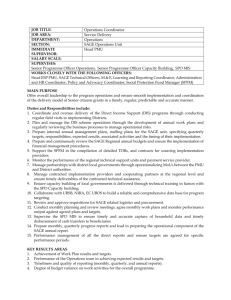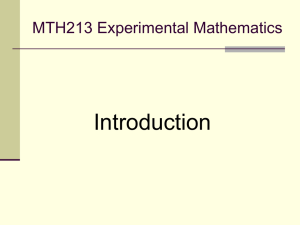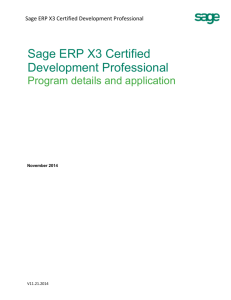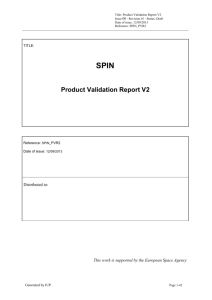How to do cross products and dot products in Sage
advertisement
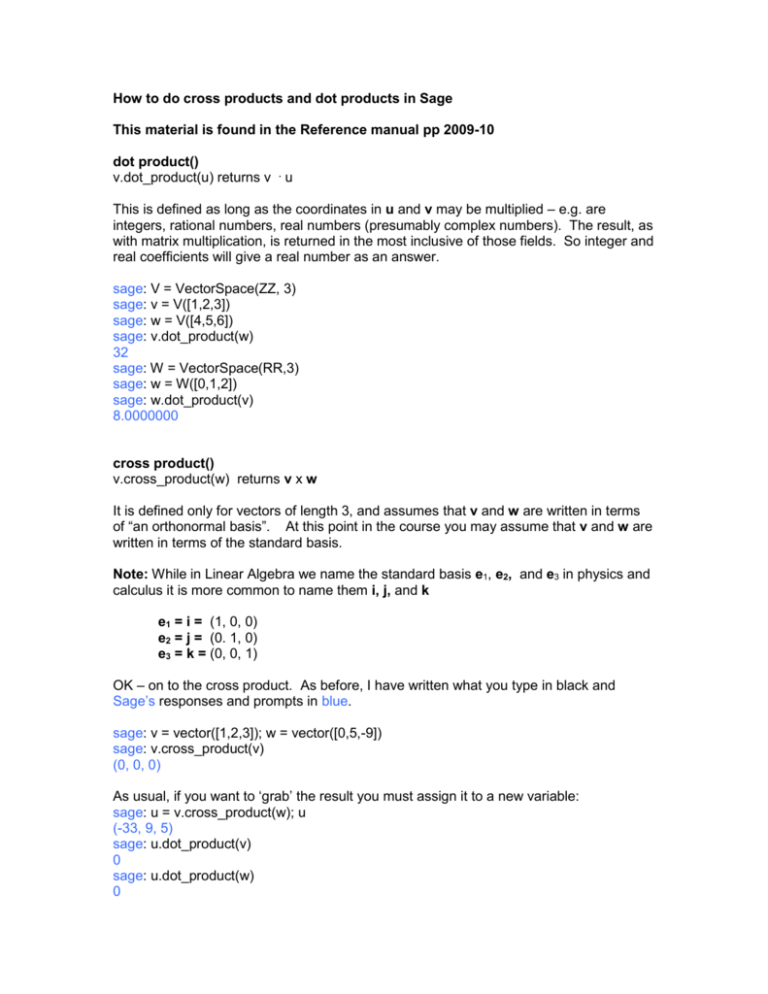
How to do cross products and dot products in Sage This material is found in the Reference manual pp 2009-10 dot product() v.dot_product(u) returns v . u This is defined as long as the coordinates in u and v may be multiplied – e.g. are integers, rational numbers, real numbers (presumably complex numbers). The result, as with matrix multiplication, is returned in the most inclusive of those fields. So integer and real coefficients will give a real number as an answer. sage: V = VectorSpace(ZZ, 3) sage: v = V([1,2,3]) sage: w = V([4,5,6]) sage: v.dot_product(w) 32 sage: W = VectorSpace(RR,3) sage: w = W([0,1,2]) sage: w.dot_product(v) 8.0000000 cross product() v.cross_product(w) returns v x w It is defined only for vectors of length 3, and assumes that v and w are written in terms of “an orthonormal basis”. At this point in the course you may assume that v and w are written in terms of the standard basis. Note: While in Linear Algebra we name the standard basis e1, e2, and e3 in physics and calculus it is more common to name them i, j, and k e1 = i = (1, 0, 0) e2 = j = (0. 1, 0) e3 = k = (0, 0, 1) OK – on to the cross product. As before, I have written what you type in black and Sage’s responses and prompts in blue. sage: v = vector([1,2,3]); w = vector([0,5,-9]) sage: v.cross_product(v) (0, 0, 0) As usual, if you want to ‘grab’ the result you must assign it to a new variable: sage: u = v.cross_product(w); u (-33, 9, 5) sage: u.dot_product(v) 0 sage: u.dot_product(w) 0



